The Foos’ guitarist and intrepid Shred With Shifty host opens the guitar garage for his current tour and details his brand-new pedal setup.
The last time PG caught up with Chris Shiflett, Chris Kies paid a visit to Foo Fighters headquarters at Studio 606. This time, he meets Shiflett in Cincinnati, onstage at Great American Ballpark ahead of the Foos’ July 25 headlining date at the stadium. It was a hot one out there, but that didn’t stop our jeans-wearing Kies and towel-drying Shifty from tackling the guitarist’s new and improved 2024 tour rig. You’ll see some familiar faces, but some new ones too, including a sharp ’80s shredder and a pink partscaster. The biggest change of all comes in the form of a Dave Friedman-designed pedalboard, an impressive rackmount setup with a massive RJM switcher to hit all the set pieces. Plus, Shifty gives some juicy teasers on future signature gear collabs and talks about how hosting Shred With Shifty has impacted his own playing.
Brought to you by D’Addario.
Leave It to Clever
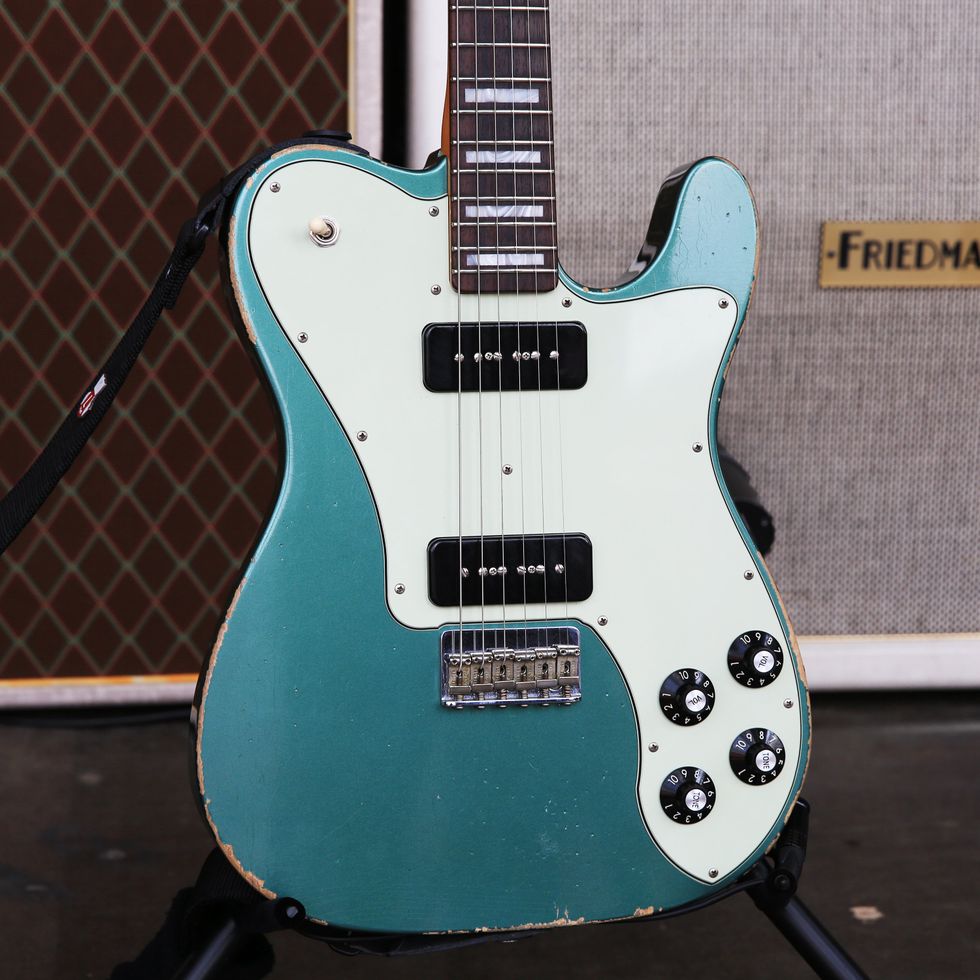
The beloved high-end version of Shifty’s signature Fender Telecaster Deluxe is equipped with Lindy Fralin P-90s, a rosewood fretboard, and Shifty’s Arsenal pin on the strap—haters be damned.
Eat the Rich
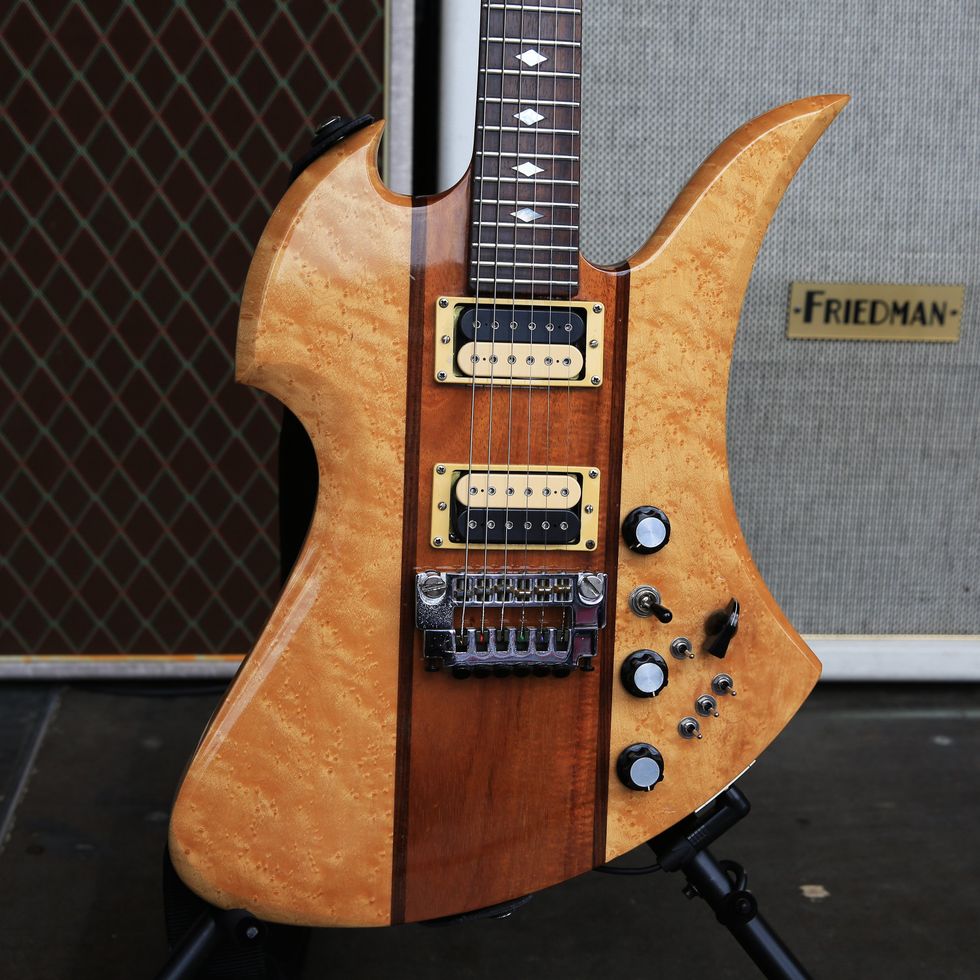
Shifty was on tour in Washington, D.C., when PG’s Jason Shadrick sent him the Reverb listing for this 1983 B.C. Rich Mockingbird. As luck would have it, the ’bird was just north in Maryland, and the seller agreed to drive the axe down and deliver it in person. Shifty swapped in some Dimarzio Super Distortion pickups, but the wiring was a bit screwy, so the kind folks at B.C. Rich reached out and arranged to fix things up. This one has D’Addario .010–.046 strings.
Pink Partscaster
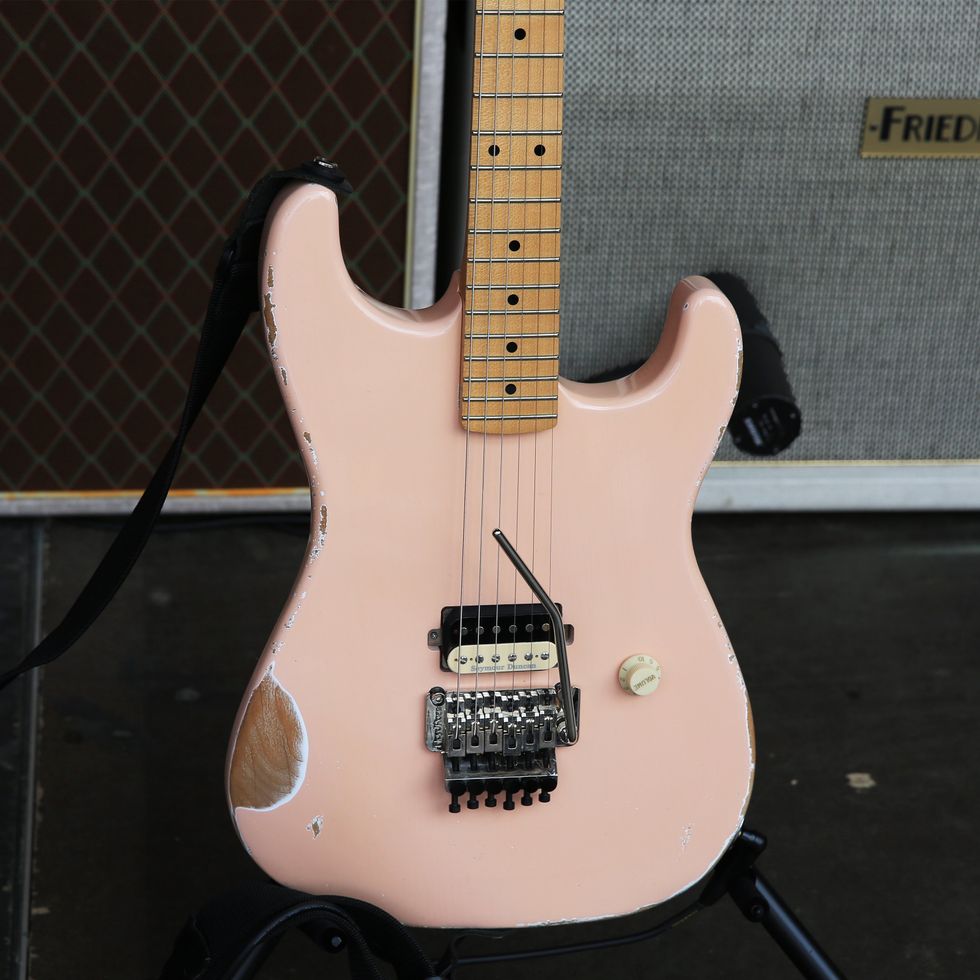
This simple, eye-catching partscaster is an homage to Shifty’s favorite players from the ’80s, chief among them Eddie Van Halen. It has a single Seymour Duncan SH-4 JB Model humbucker, a Floyd Rose tremolo system, and a lone volume knob. The online-ordered headstock has Shiflett’s name on it, just so no one takes it by accident. Eric Chaz at Eric’s Guitar Shop in Van Nuys, California, assembled this pink plucker for Shiflett.
Shifty’s still using this one to workshop pieces of Van Halen’s tapping work on “Eruption,” and the haters can eat their hearts out, because perfect imitation isn’t the goal. “If it’s loud and you do it with some measure of confidence, it kind of works,” he says.
Kickass Korina
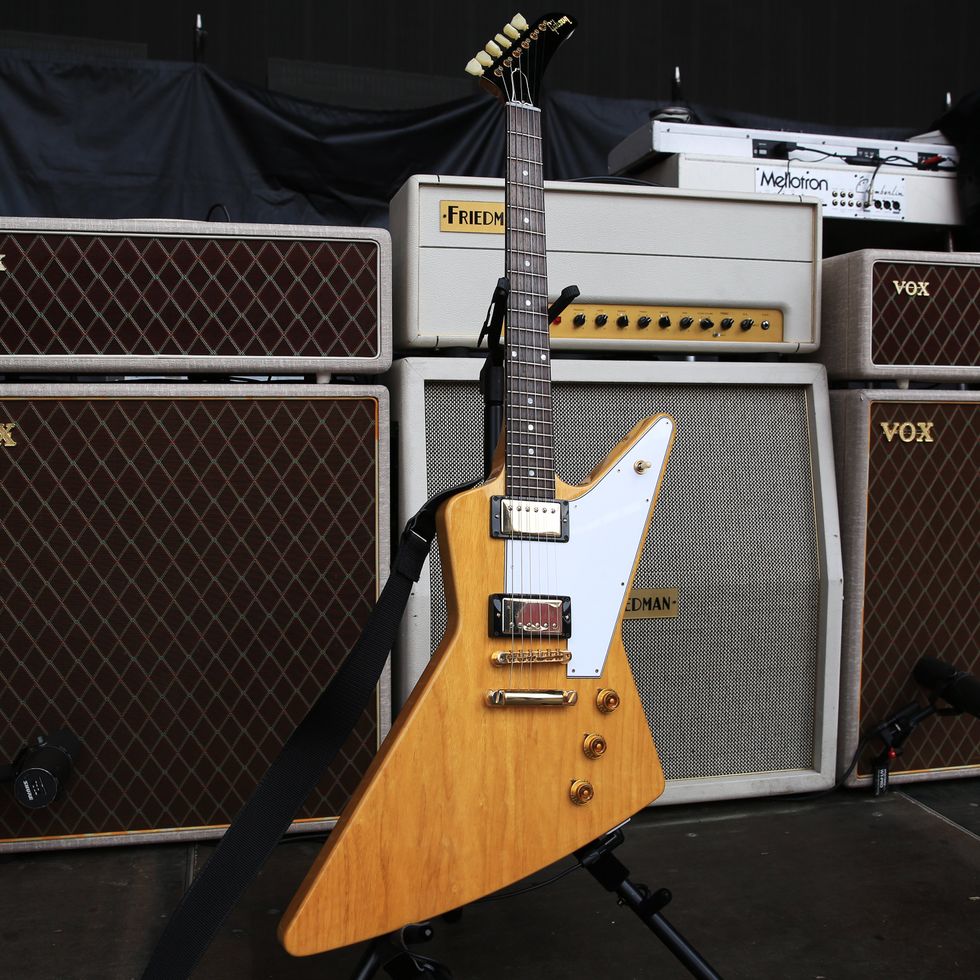
This Skynyrd-style Gibson Explorer has been hot rodded with a Seymour Duncan ’59 humbucker and another Duncan SH-4 JB Model.
Original Recipe
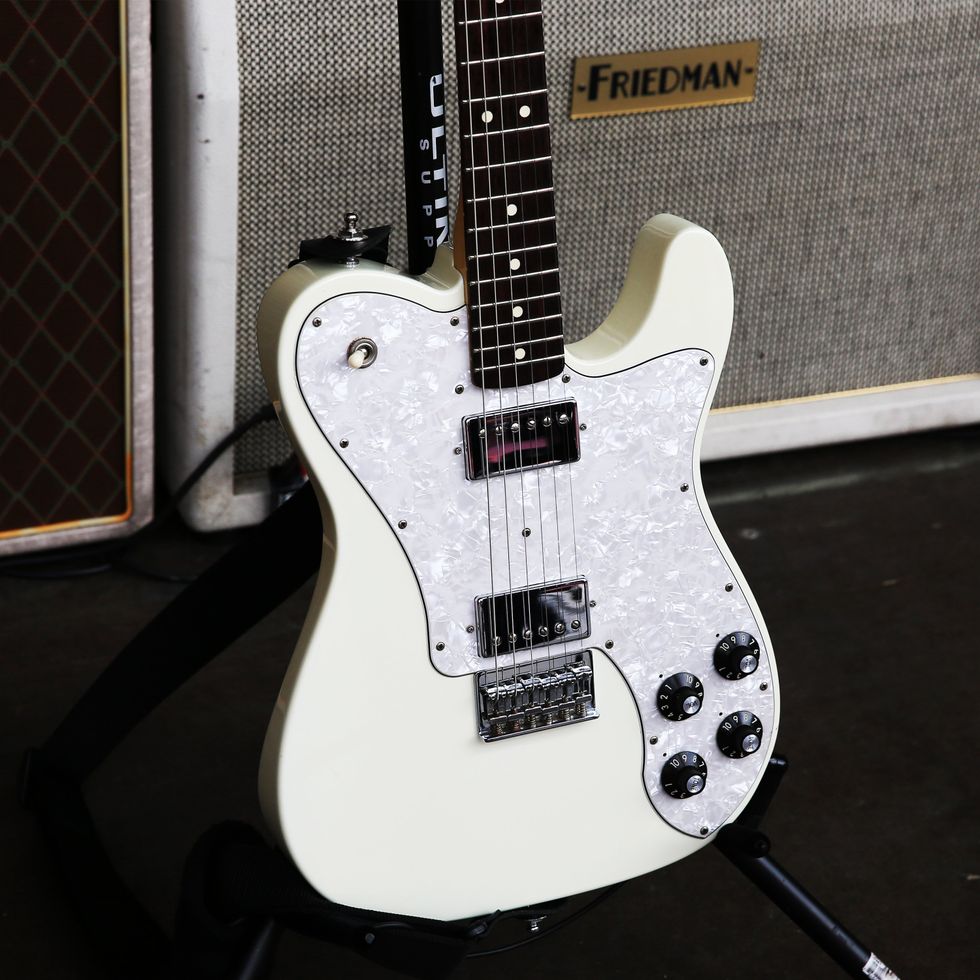
This is the original Fender Chris Shiflett Telecaster Deluxe, the guitarist’s first signature model which was designed and priced for accessibility to all players. This one got upgraded with a prized Tom Holmes humbucker. Stay tuned: Shifty teases that a new, American-made Shiflett signature might be coming by end of year….
Sticker Magnet
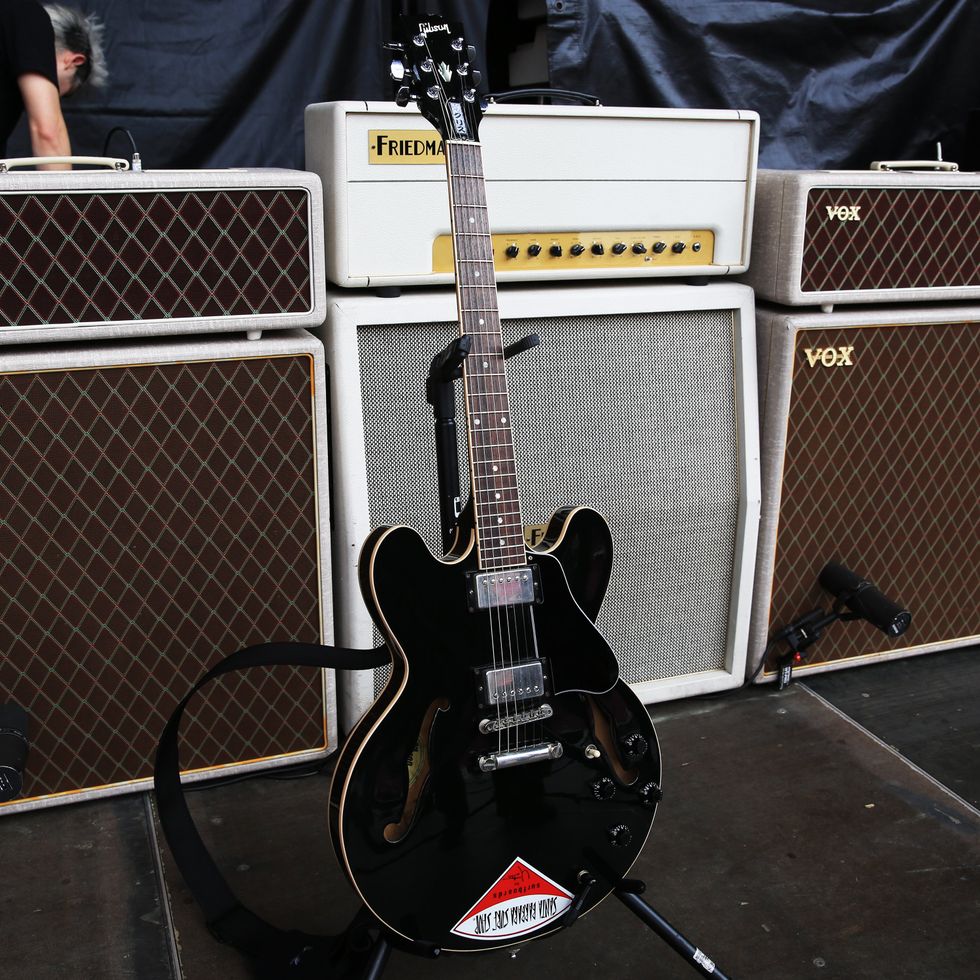
Shifty picked up this Gibson ES-335 around the tour cycle for One by One, and he’s since decorated it with a few stickers. This one’s got his classic Seymour Duncan ’59/JB humbucker combo, and stays in drop-D tuning for songs like “Monkey Wrench” and “Everlong.”
Fabulous '57

This is Shiflett’s “most vintage-y” vintage guitar: a 1957 Gibson Les Paul. He initially planned to reserve it for studio use, but fellow Foo guitarist Pat Smear convinced him to bring it out on the road. It started out as a goldtop, but now sports a finish that shows the wood and three-piece construction. It’s still loaded with the original pickups.
Stack City
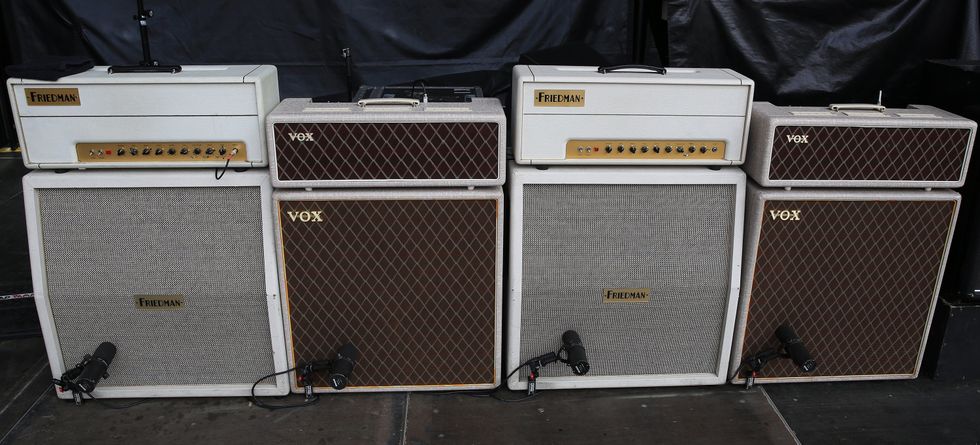
Shiflett runs a beastly quartet of half-stacks, with two Friedman BE-100 heads and two Vox AC30 heads, all accompanied by matching 4x12 cabs. Shifty keeps the Friedmans in 50-watt mode, but look out—there could be a custom Shiflett Friedman amp coming down the line.
Death of the Tap Dance
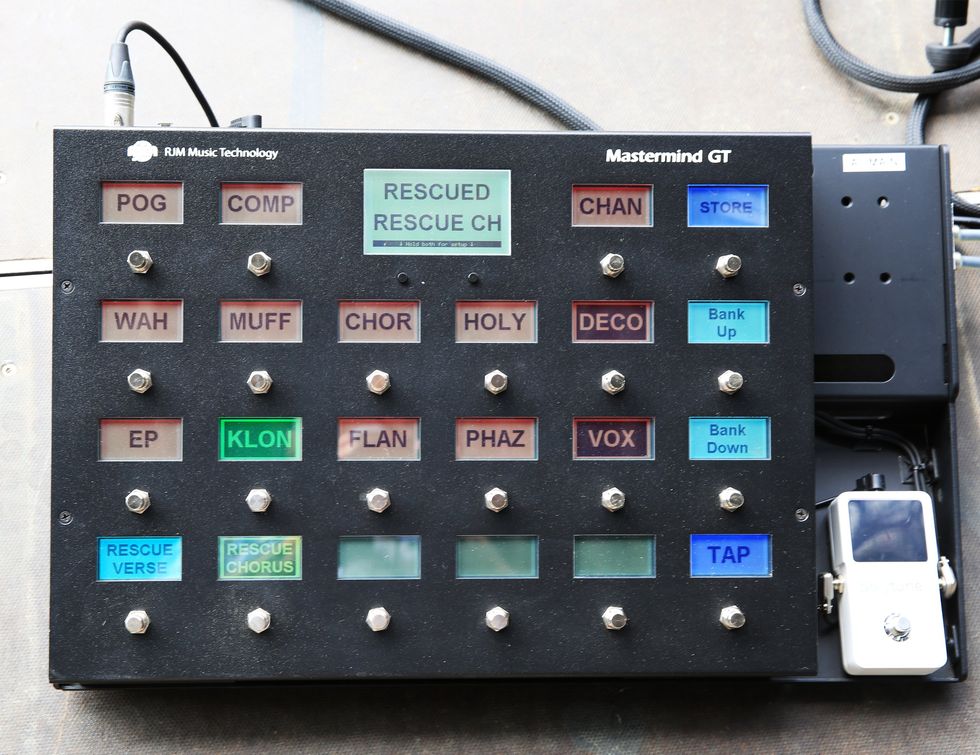
Shiflett finally got tired of tap dancing around his pedalboard, and called up Dave Friedman for some help prepping a tour-ready rig. “He said, ‘Oh, so you decided to finally get a big boy rig?’” Shiflett laughs. Friedman designed it around an RJM Mastermind GT/22, with all of Shifty’s pedals housed in a rack sidestage. It took some getting used to, but now Shiflett’s built up the muscle memory to navigate the system. For adding new sounds, he’ll text his tech, Mark Lubetski, which settings or sounds he wants for certain “scenes,” and Mark will program them in.
Pedal Playpen
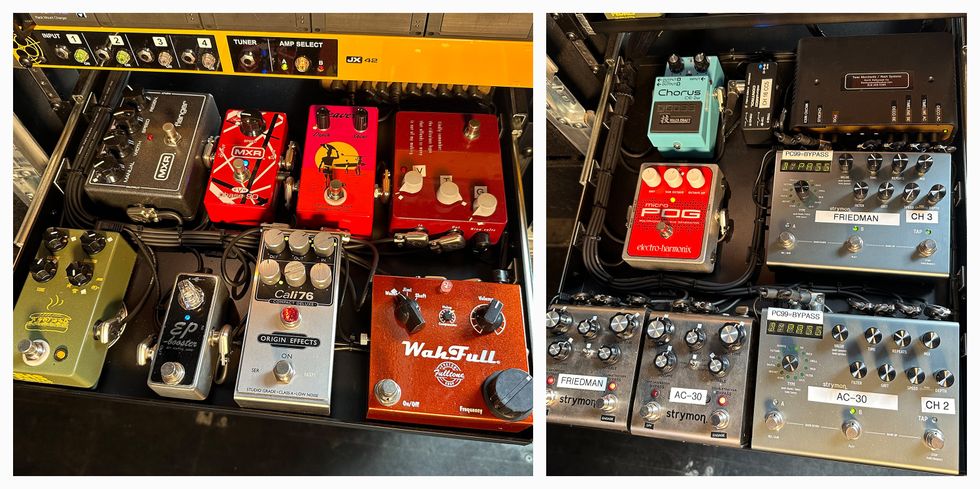
Shiflett’s pedal setup takes up two shelves in this side-stage rack. On the lower shelf, there are two Strymon Decos and two Strymon Timelines—one of each assigned to either the Voxes or the Friedmans—plus an Electro-Harmonix Micro POG, a Boss CE-2w, a Suhr microMIDI Control, and a Friedman Power Grid 10.
On the upper shelf, Shifty keeps the fun stuff: a JHS Muffuletta, Xotic EP Booster, Origin Effects Cali76, Fulltone WahFull, Klon KTR, Andy Green Pedals Seaverb, MXR EVH Phase 90, and MXR Flanger.
Shop Chris Shiflett's Foo Fighters Rig

Gibson Explorer
D’Addario .010–.046
Seymour Duncan SH-4 JB Model Humbucker
Seymour Duncan ’59 Humbucker
Gibson ES-335
1957 Gibson Les Paul
Friedman BE-100
Vox AC30
Strymon Deco
Strymon TimeLine
Electro-Harmonix Micro POG
Boss CE-2w
Suhr microMIDI Control
Friedman Power Grid 10
JHS Muffuletta
Xotic EP Booster
Origin Effects Cali76
Fulltone WahFull
MXR EVH Phase 90
MXR Flanger
![Foo Fighters’ Chris Shiflett Rig Rundown [2024]](https://www.premierguitar.com/media-library/youtube.jpg?id=53453295&width=1200&height=675)

![Rig Rundown: AFI [2025]](https://www.premierguitar.com/media-library/youtube.jpg?id=62064741&width=1245&height=700&quality=70&coordinates=0%2C0%2C0%2C0)


![Devon Eisenbarger [Katy Perry] Rig Rundown](https://www.premierguitar.com/media-library/youtube.jpg?id=61774583&width=1245&height=700&quality=70&coordinates=0%2C0%2C0%2C0)























































